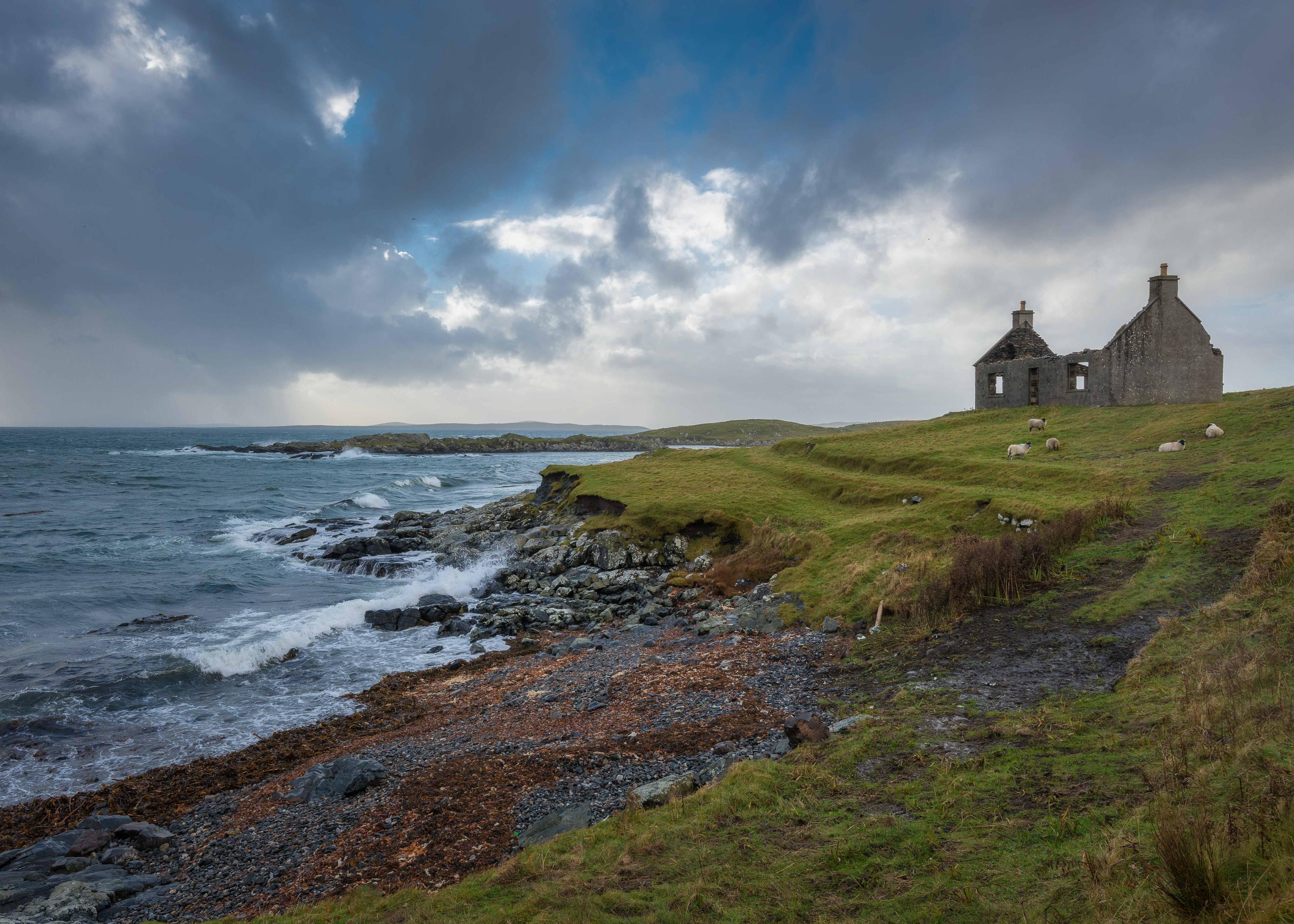While a picture may say thousand words, a map in this case, is even better. The Hebrides are on many a bucket list. But which islands do you want to focus on? Bird life, wildlife, beaches, ancient ruins, castles, and museums vary from island to island. Let's start with St. Kilda and then work our way east to the Outer Hebrides from top to bottom and finally, to the Inner Hebrides from north to south. Once you've identified the islands you're most interested in, you'll be better informed on which small ship cruise itinerary to take.
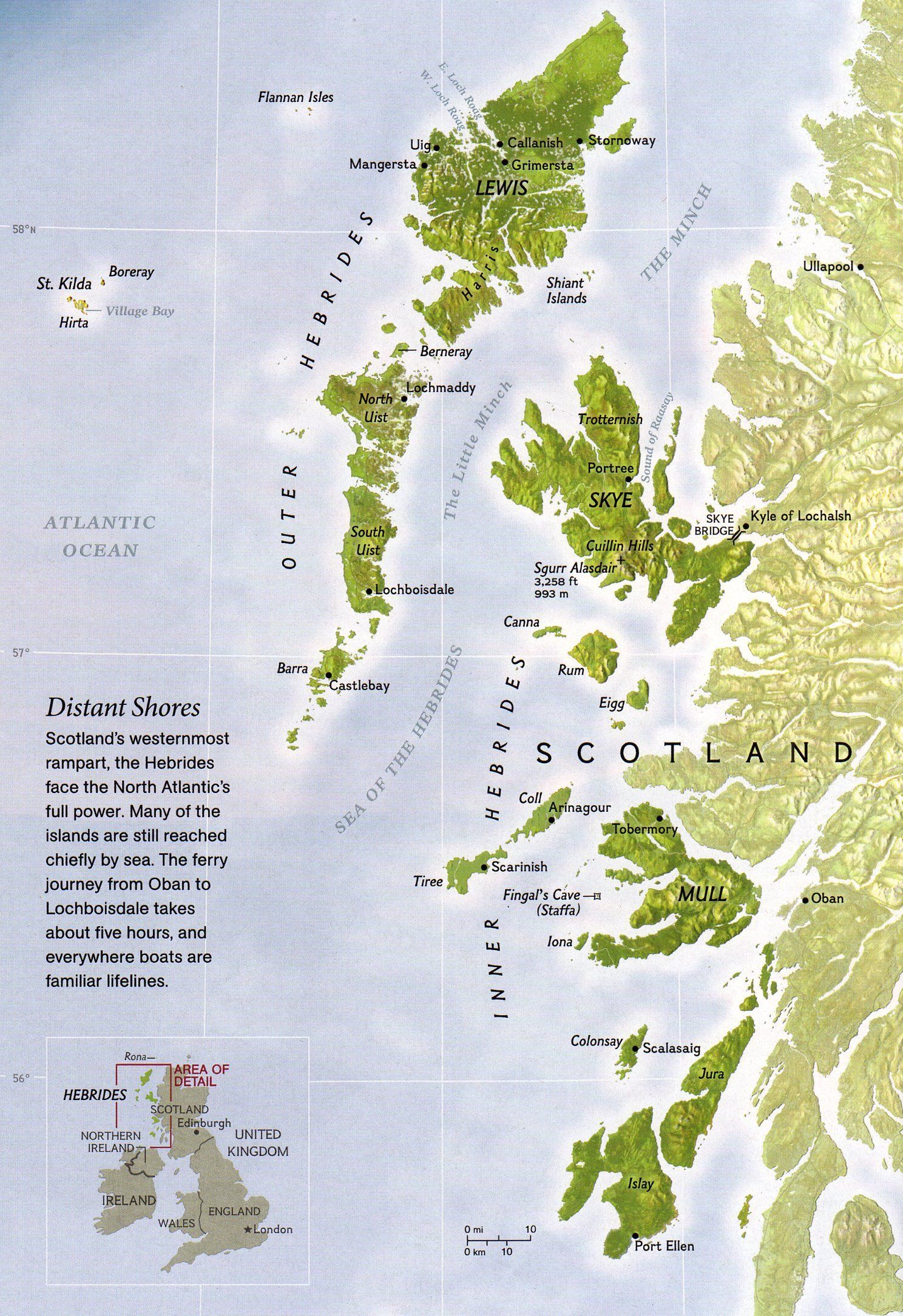
This content is from the hebridean.co.uk with permission.
St Kilda - Outer Hebrides
The last 36 Gaelic-speaking residents of St Kilda evacuated the main island of Hirta at their own request in 1930, thereby ending some 5,000 years of continuous settlement. Behind them they left a deserted village that survives today as an outdoor museum, roamed by Soay sheep. Renowned for its awe-inspiring bird cliffs and stacs, St Kilda's remote and exposed Atlantic location makes visits weather-dependent. The archipelago is now a double UNESCO World Heritage Site.
Flannan Isles - Outer Hebrides
The mysterious Flannan islands or Seven Hunters are situated 20 miles west of the lsle of Lewis and support a wide variety of wildlife. The first known inhabitant was the 7th Century preacher and Abbot, St Flann, after whom the islands are named. The infamous Iighthouse is situated on Eilean Mor. Engineered by D. A. Stevenson, it was just over a year after commission, on 15th December 1900, when the 3 lighthouse keepers mysteriously disappeared. lt is generally thought they were swept away by a freak wave, but the truth of what actually happened that night has never been proved.
Lewis - Outer Hebrides
Lewis is the largest and most northerly of the Hebrides, forming one island with Harris. Most of its wild landscape, rising to 1800 feet (549 m) in the south, is cloaked in peat bog - hence its Gaelic name 'Leodhas', meaning 'marshy'. The Callanish Standing Stones and well-preserved Carloway Broch stand testament to its occupation since prehistoric times. The port of Stornoway is the only town.
Harris - Outer Hebrides
Historically and geographically apart from Lewis, Harris is a small region of many contrasts, offering wonderful walks and the beauty of Luskentyre beach on its sandy western shores. Rodel boasts the finest Pre-Reformation church in the Western lsles and the Harris tweeds produced here are world-famous.
Scalpay - Outer Hebrides
Scalpay is a 2.5 square mile island connected to Harris via a single track bridge. Scalpay has a population of around 300 and the majorlty of islanders speak Gaelic. Eilean Glas, which can be found on a small peninsula to the eastern shore of the island, is home to the first lighthouse to be built in the Outer Hebrides. The island has quite a number of lochans, the largest of these being Loch an Duin, which has a small island with the remains of a fort.
Shiant Isles - Outer Hebrides
Privately owned by the Nicolson family since l937, the Shiant lsles are geologically outliers of Skye, ringed by basalt rocks, reminiscent of Staffa and the Giant's Causeway, that teem with thousands of seabirds. Mythically haunted by kelpies, the isles are a renowned wildlife haven for common seals, basking sharks, puffin, herring gull, oyster catcher, eider, shag and many more.
Berneray, Mingulay and Pabbay - Bishop's Isles, Outer Hebrides
At the south tip of the Hebrides, these three uninhabited Bishop's Isles, swathed in whte sandy beaches and flower-scattered machair, are awe-inspiring from the sea. Around Berneray 600 feet (183 m) cliffs, nestled by thousands of seabirds, tower up dramatically form the sea. In the north, the Lewisian gneiss 'Hermit Island' of Pabbay, settled by an early Christian community, as its Old Norse name implies, is an ideal spot on which to land.
The Uists - Outer Hebrides
North and South Uist are linked by causeways running via Benbecula and Grimsay. A paradise for walkers, these tranquil islands abound in geological and historical contrasts. The low-lying birdhaven of North Uist, scattered with greenblue lochans, is Norse and Protestant by tradition, and a world apart from the Catholic and Gaelic stronghold of South Uist. The second-largest of the Outer lsles, South Uist's softer, undulating landscape is carpeted in flower-decked machair and fringed by dunes.
Eriskay - Outer Hebrides
The reputation of the tiny, hilly yet well-populated isle of Eriskay extends far beyond its shores. Home to a rare pony breed, once used in the mines, it was here that Bonnie Prince Charlie first stepped onto Scottish soil in 1745. Eriskay is also famed as the site of the sinking of the SS Politician offshore in 1941, which inspired Compton MacKenzie's novel and the 1949 film,'Whisky Galore'.
Barra - Outer Hebrides
Named after a 6th century saint and world-famous for its unique beach airport, Traigh Mor, Barra is a beautiful, tranquil island with a fascinating history. Golden beaches backed by sandy, wild flower-dotted machair surround a more rugged interior. The main cengtre is the once prosperous herring port of Castlebay, where the Macneil's medieval fortress, Kisimul Castle, perches on a rocky outcrop offshore.
Vatersay - Outer Hebrides
The most southerly of the inhabited Outer lsles, Vatersay is sliced in two by a narrow bar of sand and machair. With dramatic beaches, spectacular wildlife and a history dating from the Bronze Age, this beautiful isle has much to offer. lt offers far-reaching views of the uninhabited Bishop's lsles and is home to some of the largest colonies of razorbill, gannet, guillemot and puffin. The population of just over 70 residents is centred mainly around Vatersay town in the south.
Handa - Inner Hebrides
This small, rocky isle sits across the Sound of Handa from the wildly beautiful west coast of Sutherland, Magnificent, horizontally stratified rocks of Torridonian sandstone to the north-west, weathered through time into ledges, form a perfect habitat for nesting seabirds, making Handa one of the largest colonies in north-western Europe.
Skye - Inner Hebrides
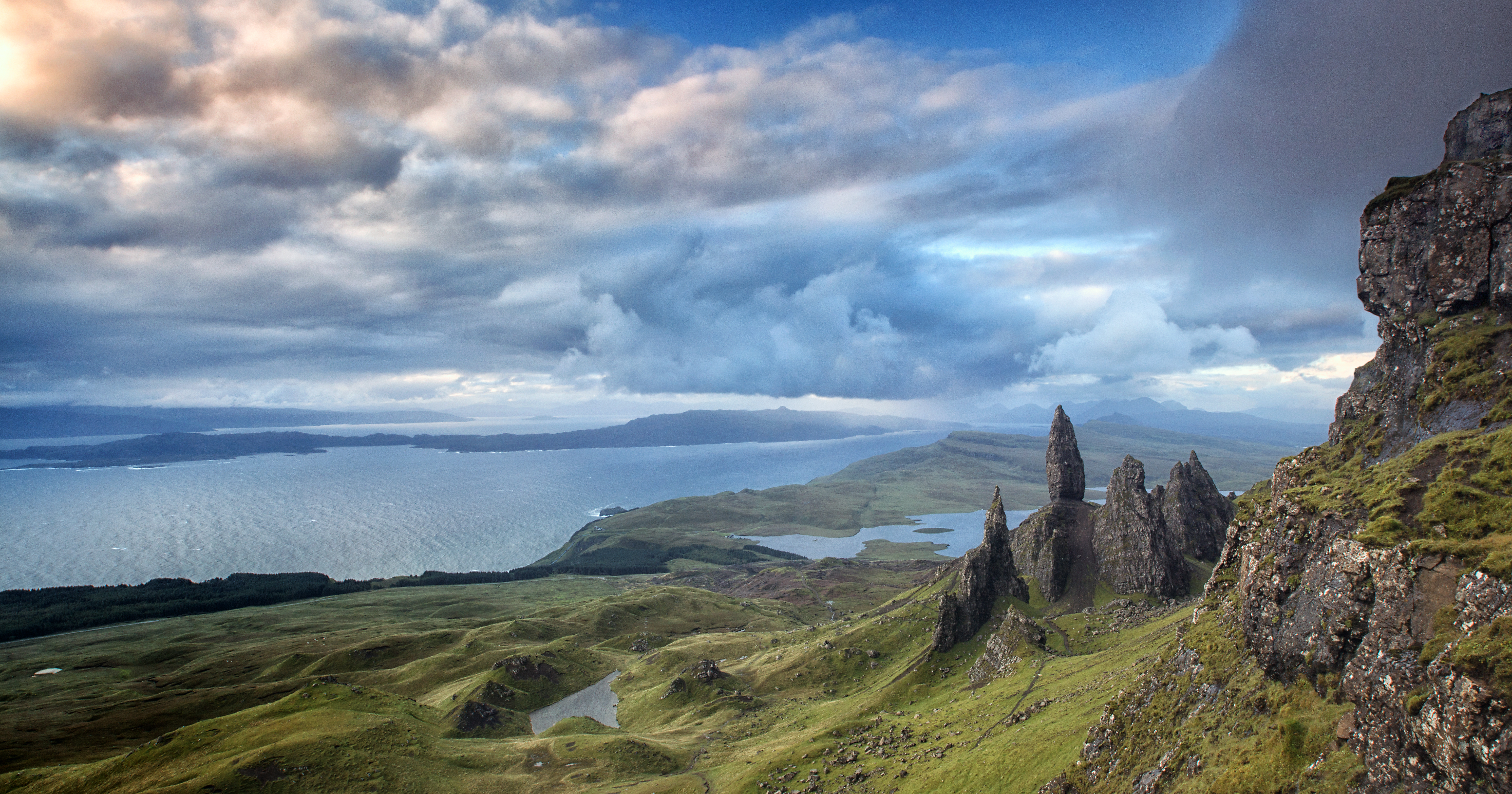
The largest of the Inner Hebrides, Skye was connected to mainland Scotland by the Skye Bridge in 1996. Created volcanically some 60 million years ago, its awe-inspiring landscapes are a paradise for walkers and climbers. Bizarre rock formations punctuate The Quiraing, with the Old Man of Storr, Trotternish to the northeast and Vaternish to the north-west. The island has a rich history covering the Highland Clearances, the Jacobite Rebellion and Clan Warfare. Skye is home to both Clan Macdonald and Clan Macleod who have their clan castles on the island.
Isle of Rona - Inner Hebrides
Rona, sometimes called South Rona to distinguish it from North Rona, lies between the Sound of Raasay and the Inner Sound just north of the neighbouring island of Raasay and east of the Trotternish peninsula of Skye. The varied terrain belies its modest size of just 5 miles long. ln places wild and rugged, Rona also hosts magical mossy and rich woodland, secret lochs and rocky hills, Rona's name is believed to be of Old Norse origin meaning 'rough islands' and probably reflects a Viking settlement.
Summer Isles - Highland Isles
The Summer lsles are a cluster of small islets lying off the coast of Ullapool, in the mouth of Loch Broom. Tanera Mor is the largest island and was the last one to remain inhabited. lt was formerly home to an Atlantic salmon fish farm, a cafe and a post office, which operated its own local post and printed its own stamps. The island has no roads, and the only recognisable path goes around the Anchorage, the sheltered bay on the east side of the island. lsle Martin is uninhabited and is the closest of the Summer lsles to Ullapool. lt has been the site of a monastery, a herring curing station and a flour mill. Now recognised as a bird sanctuary, it is owned and managed by a community trust.
Raasay - Inner Hebrides
Located between Skye and the mainland, Raasay, 'lsle of the Roe Deer', is relatively low-lying in the north and mountainous in the south, rising to 1,453 feet (443 m) on central Dun Caan. Visited by Boswell and Johnson in 1173, the island is most famous as the birthplace of Scottish Renaissance poet Sorley Maclean. The main village is lnverarish.
Canna, Small Isles - Inner Hebrides
Joined to Sanday by a causeway, secluded Canna lies less than 5 miles (8 km) off Rum. Dubbed the 'Garden of the Hebrides', this elongated, green and grassy isle is capped by magnetic Compass Hill at 458 feet (14O m) in the north. Canna was one of the earliest Christian settlements, associated with St Columba, who was later adopted as its patron saint.
Rum, Small Isles - Inner Hebrides
Capped by Askival (2,664 ft/ 812 m) in the rocky Cuillin, the wildlife haven of Rum is a National Nature Reserve and research centre. Owned by Scottish Natural Heritag since 1957, it was bought by the Lancashire industrialist John Bullough in 1879. At the turn of the 20th century, his playboy son, Sir George built the folly of Kinloch Castle, which remains a time-capsule of those headier Edwardian days.
Eigg, Small Isles - Inner Hebrides
Bought out by its islanders in l997, Eigg has been settled since prehistoric times and was once the seat of the Lord of the lsles. Its rich past is marked by lron Age forts, a 6th century church, Viking burial mounds and a graveyard that is a moving testament to the 395 MacDonalds massacred in a cave by the Macleods in 1577. Rising sheer above the plateau of this wildlife reserve, columnar pitchstone An Sgurr adds magic and mystery.
Muck, Small Isles - Inner Hebrides
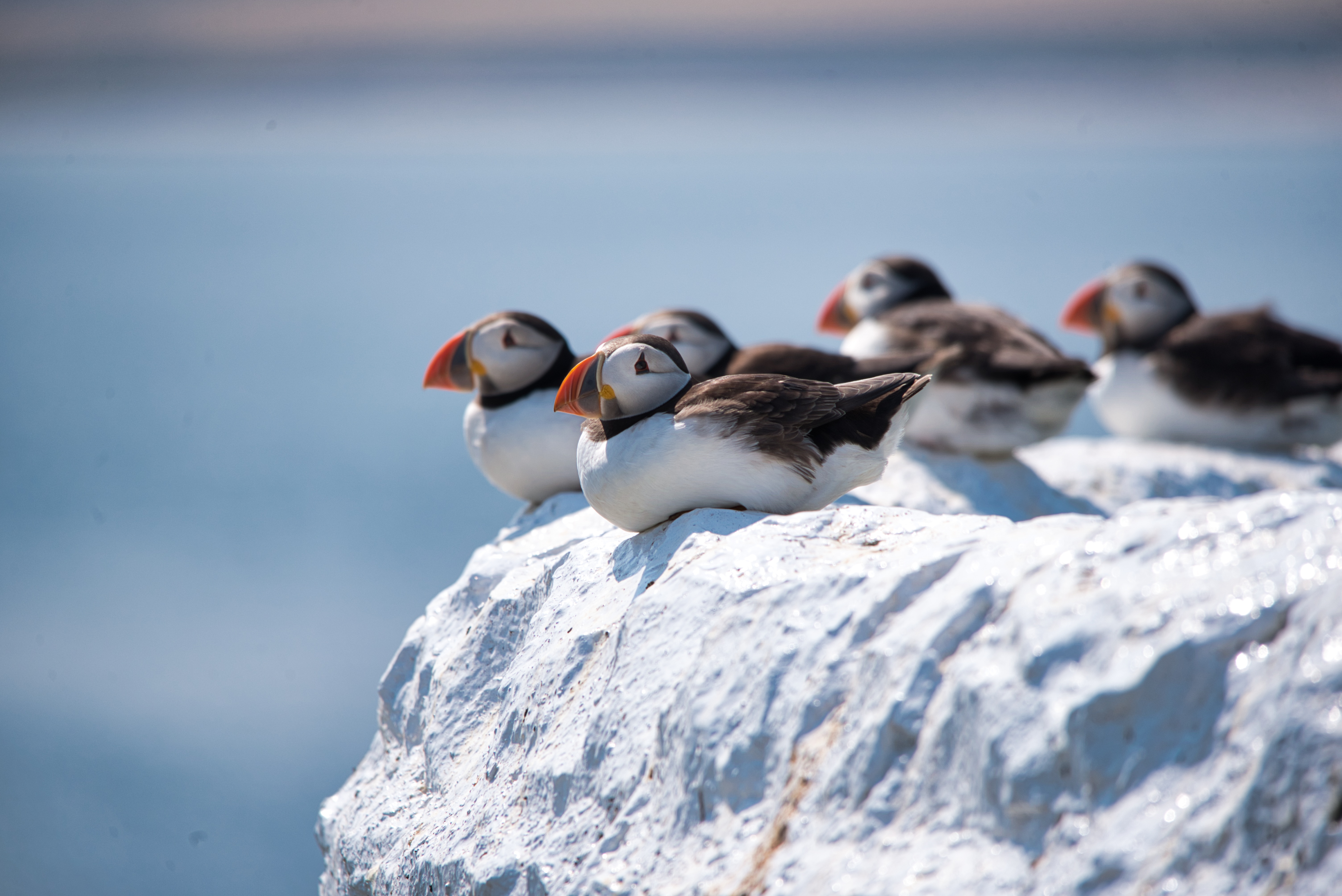
The flat and fertile lsle of Muck, scattered with wild flowers and rimmed by silver shell-sand beaches, is a peaceful haven for puffin, kittiwake, fulmar, shearwater, seaeagle and the porpoises that swim off its shores. Port Mor is the only village, where the tearoom and craft shop serves delicious home baking.
Coll - Inner Hebrides
The rocky, wild and virtually treeless island of Coll was first settled in the Stone Age. Dotted with ruined cottages, this bird haven is picturesquely clad in flower-dotted machair, fringed by silver-white beaches, and offers refreshing bike rides and walks. Lying four miles west of Mull, Coll measures 13 miles in length and four miles across at its widest point. Arinagour is the main village which is home to half of the island's population.
Tiree - Inner Hebrides
Enjoying Iong hours of sunshine, mild, fertile Tiree is the most westerly of the lnner Hebrides, This wild flower and birdlife haven, with shell-sand blown machair and surf-washed beaches, is much favoured by artists for its natural beauty and colour, Duns and brochs bear witness to its ancient history, while the white Thatched House Museum in Sandaig reveals its more recent crofting past. Housed in the old signal room at Hynish is the Skerryvore Lighthouse exhibition which tells the fascinating story of the hazardous construction of Scotland's tallest lighthouse.
Iona - Inner Hebrides
The exiled lrish prince and missionary St Columba reached lona in 563 to found his community, Ianding at pebbled St Columba's Bay in the south, as the legend goes. Originally dating from the 12th century, the restored abbey remains a much-revered place of pilgrimage. An enjoyable walk across the windswept machair leads to the Bay at the Back of the Ocean, with its Spouting Cave, facing the open Atlantic and America.
Lunga, Treshnish Isles - Inner Hebrides
Designated a Site of Special Scientific Interest, Lunga is rich in plant life with many rare and endangered species native to the island. Described as a 'green jewel in a peacock sea', Lunga was inhabited until 1857 and the remains of the ruined village and its blackhouses can still be seen today.
Staffa - Inner Hebrides
Staffa, named 'Stave' or 'Pillar lsland' by the Vikings, lying 6 miles (1O km) west of Mull, was formed volcanically at the same time as the Giant's Causeway, cooling into mainly hexagonal black basalt columns. Cliffs rising to 131 feet (40 m) are riddled with caves, the most famous of which is Fingal's Cave at Staffa's southern tip, named after legendary lrish hero, Finn MacCool.
Mull - Inner Hebrides
Fringed by an indented 300 miles (480 km) coastline, Mull is an island of sweeping moors broken occasionally by picturesque clearings. Colourful Georgian-fronted Tobermory is the capital and Craignure the main port, south-east of which lies the ancient Duart Castle, seat of the Macleans.
Eriska - Inner Hebrides
'Water-nymph lsland' in Gaelic, Eriska is a flat tidal 3OO acres (121 ha) island at the entrance to Loch Creran, linked by bridge to the mainland, Privately-owned, it is run as a luxury hotel, based at Scottish Baronial Eriska House, built in 1BB4 by the Stewarts of Appin, in wooded grounds.
Ulva - Inner Hebrides
Situated off Mull, the tiny isle of Ulva is a traffic-free haven covering barely 2 square miles (5 square kms) and home to only 16 permanent residents. One of the most ancient settlements in the Western lsles and erstwhile seat of Clan MacQuarrie, the island is now privately owned by the Howard family. Ulva's past is well documented at Sheila's Cottage Museum on the west coast. The island is separated from Mull by a narrow strait and connected to neighbouring Gometra by a bridge.
Kerrera - Inner Hebrides
Tiny Kerrera tranquilly guards the entrance to Oban from its two sheltered harbours at Ardentrive Bay and Horse Shoe Bay. Historically a stepping-stone for cattle drovers between Mull and the mainland, this fertile and hilly isle is crowned by the Renaissance MacDougall stronghold of Gylen Castle.
Colonsay - Inner Hebrides
Colonsay is located eight miles from Jura's north coast and the same distance from the west coast of Jura. Scalasaig is the main settlement. Another bird haven, home to some 2OO bird species including the elusive corncrake, and 4OO species of flora. Colonsay is a landscape of many contrasts from machair to woods, moors to green fields and rocky to sandy cliff-backed shores. Its finest beach is dramatic Kiloran Bay and inland lie the exotic woodland gardens of Colonsay House.
Jura - Inner Hebrides
Crowned by the landmark Paps, Jura is a place of wild beauty offering a haven to a wide range of wildlife, including some 6,500 red deer. Glaciated raised beaches are a marked feature of its western shores, with the treacherous Corryvreckan Whirlpool to the north. Jura has one tiny village of 200 residents, Craighouse, where the small Jura Distillery has produced a unique single malt since 1810.
Islay - Inner Hebrides
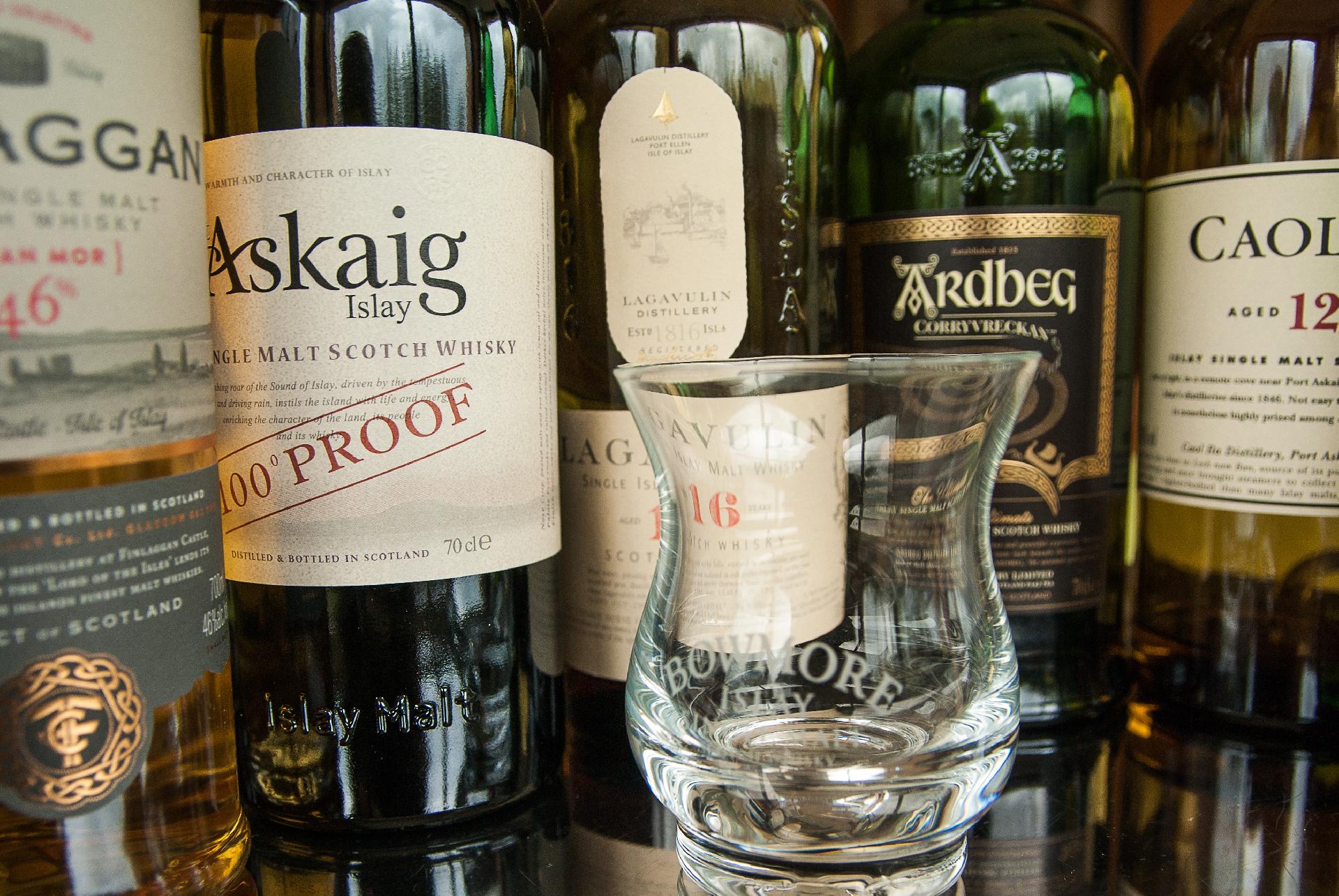
Erstwhile seat of the MacDonalds, Lords of the lsles, mild lslay is renowned for the peaty single malts of its eight operating distilleries. lslay abounds in birdlife at the RSPB Loch Gruinart Nature Reserve, hub of a barnacle geese colony and historic treasures from the 18th century round church at Bowmore to the late 9th century High Cross of Kildalton.
Gigha - Inner Hebrides
Three miles (4.8km) west of Kintyre, green and fertile Gigha, 'God's' or 'Good lsland' is now owned by its community, ln addition to dairy farming, goats are reared to produce a dlstinctive, fruit-shaped cheese - one of the island's main exports. Ardminish is the only village and site of Achamore House set in 50 acre (2O ha) gardens planted by Sir James Horlick.
Arran - Firth of Clyde Islands
Influenced by the mild North Atlantic Drift, Arran is a wildlife haven rising to high peaks, including four Corbetts. At the foot of the highest, Goatfell, nestles 16th century red-sandstone Brodick Castle close to Brodick town. Firteen miles (24 km) to the north, the 14th century ruined castle of Lochranza was once a royal hunting lodge.
Holy Isle - Firth of Clyde Islands
Located across Lamlash Bay, Holy lsle has long history as a sacred site; a spring or Holy Well held to have healing properties, the hermit cave of 6th century monk Saint Molaise and evidence of a 13th century
monastery can be found here and there is evidence of some runic writing on the roof of the cave of Saint Molaise.
Bute - Firth of Clyde Islands
Crossed by the Highland Boundary Fault, Bute is an isle of distinctly contrasting landcapes from bare, rounded and craggy uplands to the north to the lower, undulating and fertile south. Golden beaches fringe the west coast, many with views over the south towards Arran. The Victorian resort of Rothesay is the only town.
Cumbraes - Firth of Clyde Islands
The contrasting Cumbraes afford fine views to the mainland, Arran and Bute. Green and undulating Great Cumbrae is home to the only town at Millport, elegantly lining Millport Bay. Here the tiny but beautiful Cathedral of the lsles, regarded as Britain's smallest cathedral, seats only 1OO worshippers. Rough and rocky Little Cumbrae, held by the Hunters and later by the Montgomeries, was maintained as a royal hunting forest. lts surviving ruins include the castle demolished by Oliver Cromwell's army in 1650 and a small chapel dedicated to St Beya.
If you'd like to learn more small-ship voyages to the Hebrides, let's schedule a consultation so that I can learn more about you and your interests. Or, sign up for my weekly newsletter:

